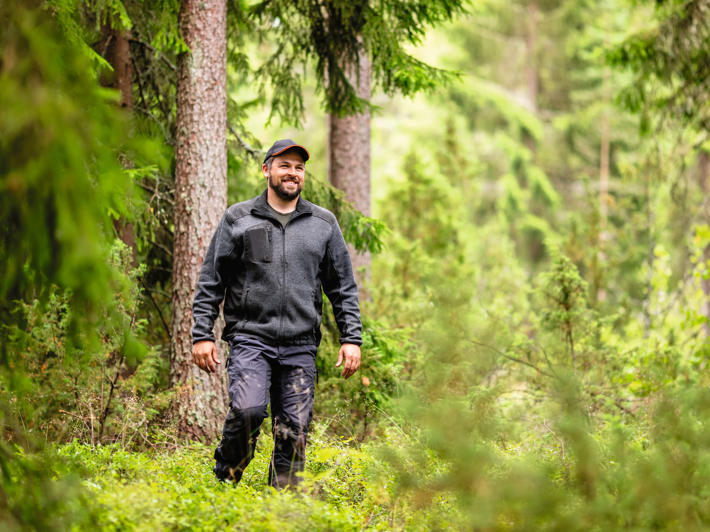Applying for FSC® certification first came up during a wood trade, when Ilkka Hautaviita told Metsä Group’s forest specialist Ari Viitikko that he had been considering it for quite some time.
Hautaviita’s home farm is in Karijoki, in the southern part of South Ostrobothnia. The farm specialises in potato cultivation, but forests account for a significant share of its sales.
“My forests are purely commercial, but money is not the only value guiding their use,” says Hautaviita.
The estate’s forests are diversely structured. There’s an even distribution of forest development stages, as well as numerous site types. Drained pine bogs and heath forests are typical of the area. Drainage was carried out most actively between the 1960s and 1980s when Hautaviita’s grandfather owned the estate.
Easily found sites for protection
Under FSC certification, at least five per cent of an estate’s forestland must be excluded from forestry use. In addition, another five per cent of forestland must be managed using felling practices promoting continuous cover forestry or biodiversity.
It is easy to find sites to be excluded from forestry use on old drained sites. Sites where trees grow poorly despite drainage will be left to grow back to their original condition.
On Hautaviita’s estate, littoral forests around waterbodies come under the scope of continuous cover felling required by FSC. Under FSC, waterbodies must be lined with buffer zones where continuous cover forestry is allowed to a certain degree. These buffer zones are also included in the area of restricted use.
In Hautaviita’s forests, it was easy to find natural sites to be excluded from forestry use in accordance with FSC.
“It is usually easy to find such sites on estates with waterbodies or drained peatland. These sites also benefit most from protection,” says Hautaviita.
In addition to protected areas, retention trees and decaying wood must be left in forests certified under FSC. Trees of particular importance for biodiversity, such as prior retention trees, hollow trees, nesting trees and broadleaved trees, are primarily selected as retention trees. With the exception of fresh forest damage, all dead wood must be preserved in the future to ensure that forests contain an adequate amount of decaying wood, which is important to various species.
Hautaviita and Viitikko jointly determined the sites to be entirely protected and partly excluded from forestry use. Viitikko also handled the application process for FSC certification, which only took a few weeks.
“After the initial planning, FSC certification didn’t take up any of my time,” says Hautaviita.
There is demand for FSC wood
Market demand for FSC certified products continues to increase. In wood trade, forest owners receive an FSC bonus for each cubic metre of FSC certified wood.
A higher stumpage price, steady demand and knowing that the Finnish forest industry needs FSC wood were what originally got Hautaviita interested in FSC certification.
“The potato business has taught me that you also have to consider customer needs in your operations. I believe that forest owners should pay more attention to the end products for which their wood raw material is most suitable, and how the material can best benefit the forest industry and society at large,” says Hautaviita.
FSC-C111942
This text was published in Metsä Group’s Viesti 3/2023.
Text: Maria Latokartano
Photo Krista Luoma
